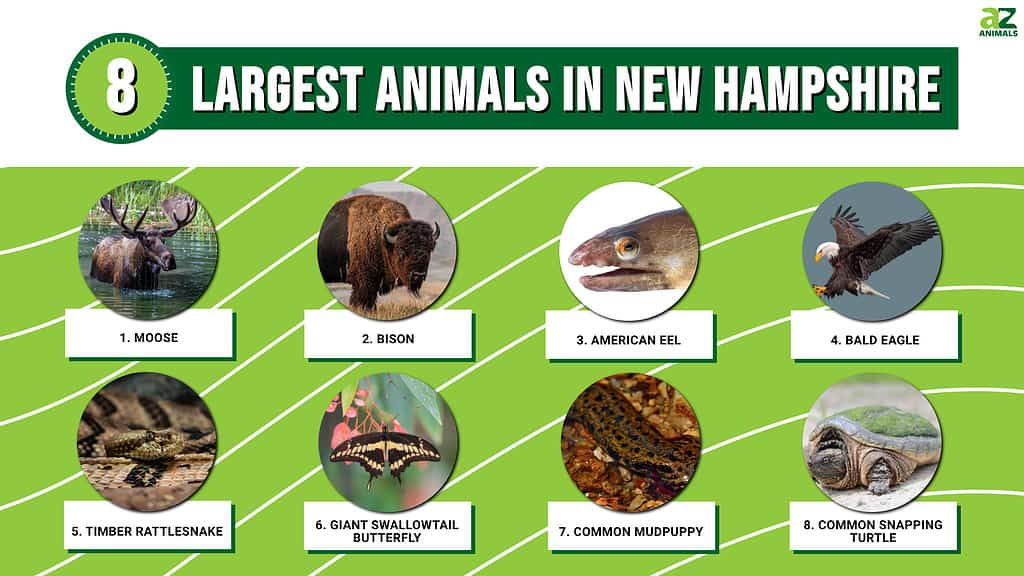
We weren’t surprised by seeing the moose at the top of the list, but the butterfly and salamander were a surprise. Here are eight of the largest Animals In New Hampshire, measured by weight or height/length.
New Hampshire is a tiny little slip of a state compared to those in the western United States. Yet, its beautiful landscape is home to Mount Washington, the highest peak in the northeastern U.S., and five of New England’s rivers originate there.
1. Largest Animals in New Hampshire: Moose (Alces alces)
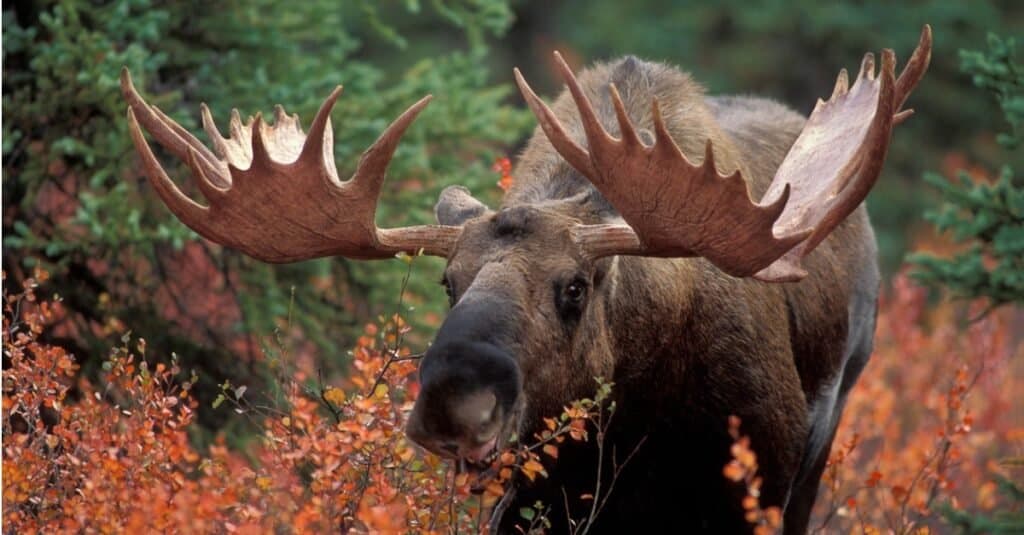
Moose is the second-largest mammal in North America.
©iStock.com/RONSAN4D
New Hampshire is home to the largest member of the deer family – the moose. Males grow new antlers every spring, beginning in March or April before mating season. They begin to drop them in November, but juveniles may keep them into early spring.
It’s hard to believe that an animal can grow as big as a moose by eating vegetation, but grow, they do. However, to get enough calories to support their bodies, moose must consume between 25 and 45 pounds of vegetation daily. In addition, they spend 97% of their time eating and resting while chewing their cud.
A large individual can weigh over 1,000 pounds and stand six feet tall at the shoulder, making the moose the largest wild animal in New Hampshire. Aside from bison, they’re the second-largest mammal in North America. They inhabit many areas throughout Canada and most of the northern regions of the United States, ranging as far south as the New England States.
2. Largest Animals in New Hampshire: Bison (Bison bison)
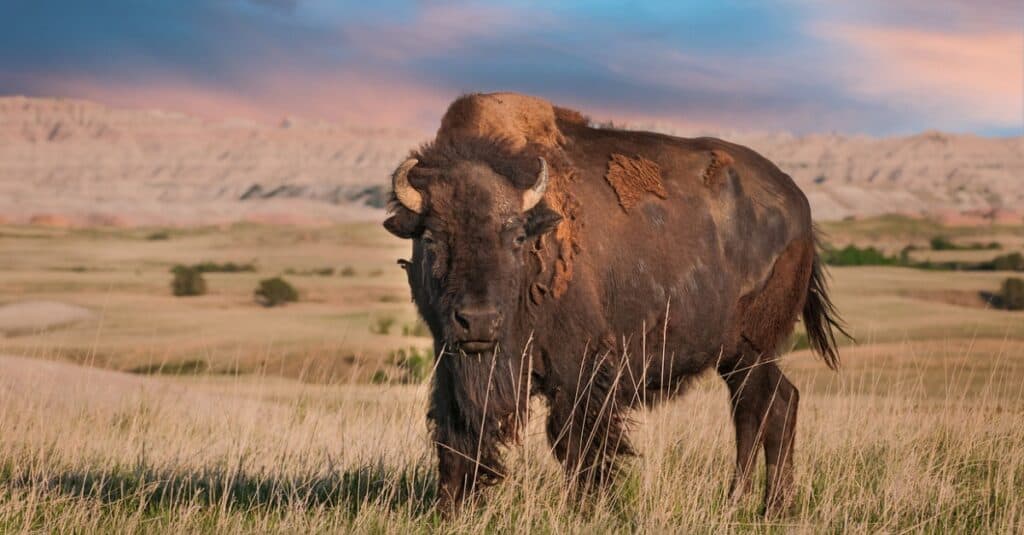
The American Bison is the largest land mammal in North America!
©Geoffrey Kuchera/Shutterstock.com
While moose are the largest wild mammals in New Hampshire, there are some privately-managed herds of bison. The bison in the state isn’t allowed to run wild across the state but sometimes stage jail breaks from their huge ranch homes.
When English settlers first arrived, bison roamed across most of North America, including southern New England. However, the eastern subspecies was extirpated from the east of the Mississippi by the late 1800s. Efforts to reintroduce them to some of their historical range are underway, even in New Hampshire, but these aren’t the same subspecies as was originally present and are bigger animals.
Conservation groups have a problem with reintroduction because bison need vast tracts of land and prefer to roam in large herds. The landscape has changed since the 1800s, and the open grasslands with thinner, younger forests aren’t there anymore. Instead, there are mature forests without enough open space for the bison.
Given this and the toll that real estate development and agriculture take on the open spaces, the bison will have to stay on privately-owned ranch land.
3. Largest Fish in New Hampshire: American Eel (Anguilla rostrata)
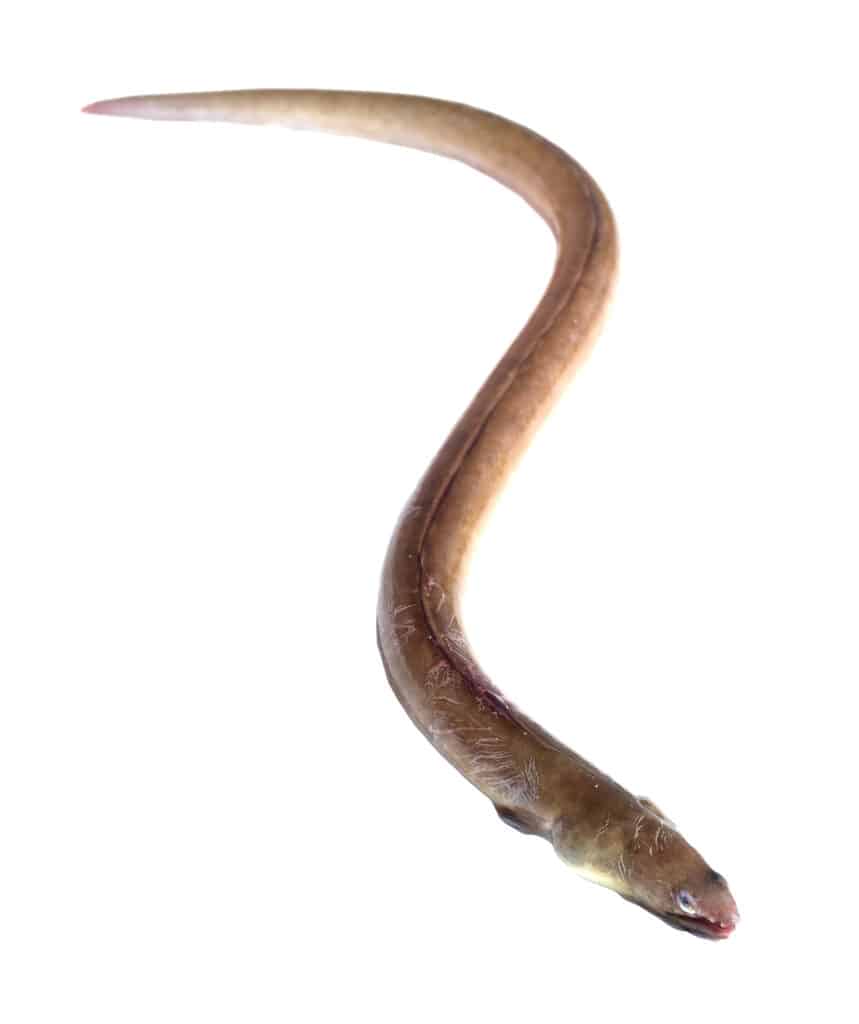
The long, sleek body of the American eel can be up to four feet long.
©IrinaK/Shutterstock.com
This fish looks more snakelike than fishlike, as the eels’ scales are set deeper into the skin. It makes their scales less visible than the scales of other fish species and explains why they seem so much slimier. Eels have a long dorsal fin that meets at the tail fin and a similar ventral fin. Their color varies from olive green with brown shading to greenish-yellow and white or light gray on the belly.
The American eel is the largest fish in New Hampshire and sometimes reaches four feet long. In 1975, a fisher caught a 44-inch long eel, the longest on record in the state. It lives along the North Atlantic coastline from Greenland and Iceland south to Venezuela in all freshwater, estuaries, and marine waters.
4. Largest Bird in New Hampshire: Bald Eagle (Haliaeetus leucocephalus)
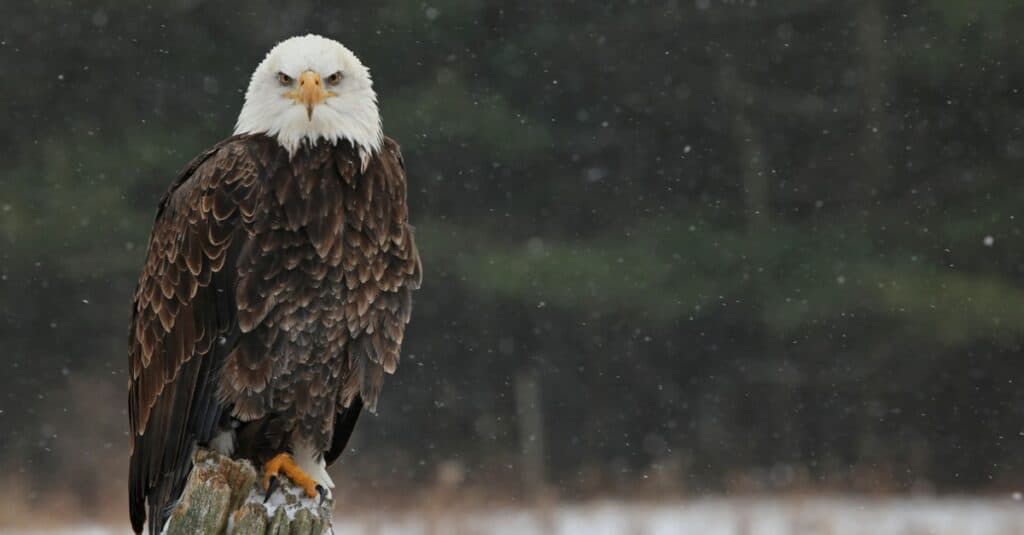
The bald eagle is the third-largest bird in North America.
©iStock.com/ca2hill
The national bird of the United States has a huge range and a wingspan to match. Bald eagles inhabit most of North America, despite being pushed to the brink in the 1970s. Their population has steadily grown since the pesticide DDT, linked to a dramatic decline in bald eagles, was banned.
The bald eagle is the third-largest bird in North America. Only the American white pelican and California condor surpass its wingspan. They are year-round residents in New Hampshire, with breeding pairs raising young in the spring and wintering in areas with open water.
With a wingspan of up to eight feet, bald eagles are the biggest bird in New Hampshire. These birds prefer areas with tall trees where they can build nests near large bodies of water. Their distinctive white head and tail only develop after maturity at around age five. Until then, juvenile bald eagles are frequently mistaken for golden eagles.
5. Largest Snake in New Hampshire: Timber Rattlesnake (Crotalus horridus)
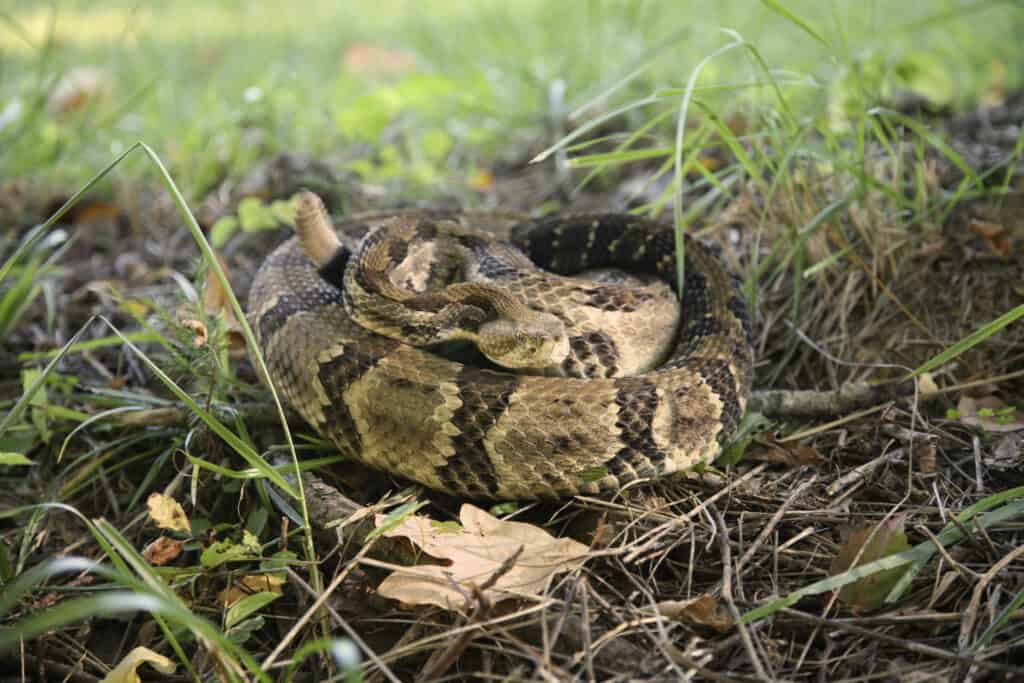
Timber Rattlesnakes are extremely venomous, but they are not typically aggressive.
©iStock.com/NajaShots
Timber rattlesnakes are perhaps best known as the snake on the Gadsden flag – the yellow flag emblazed with the words, “Don’t Tread on Me” above a coiled rattlesnake. Benjamin Franklin respected rattlesnakes, saying they were emblems of vigilance (no eyelids), and observed, “She never begins an attack, but once engaged, never surrenders.”
The rest of us, however, have had a harder road with rattlesnakes. Many people are nervous around an animal that moves without legs and whose bite can kill. However, these snakes are cowards first and would rather escape than fight.
In New Hampshire, the snake’s base color is much darker, approaching black, which hides its markings. In more southern parts of its range, this snake exhibits a light tan to gray base color with chevron-type crossband markings down the length of its back. It usually has a lighter-colored dorsal stripe that splits the chevrons. The Timber rattlesnake is typical in that it has a stocky body that ends in a rattle. It also has a big, angular head holding long, hinged fangs and venom glands.
The timber rattlesnake is New Hampshire’s biggest snake. This species can reach five feet long, and while the black racer achieves similar lengths, they are much thinner snakes and don’t weigh as much. Critically endangered in New Hampshire, there is only one known population in the state’s southern end.
6. New Hampshire’s Largest Insect: Giant Swallowtail Butterfly (Papilio cresphontes)
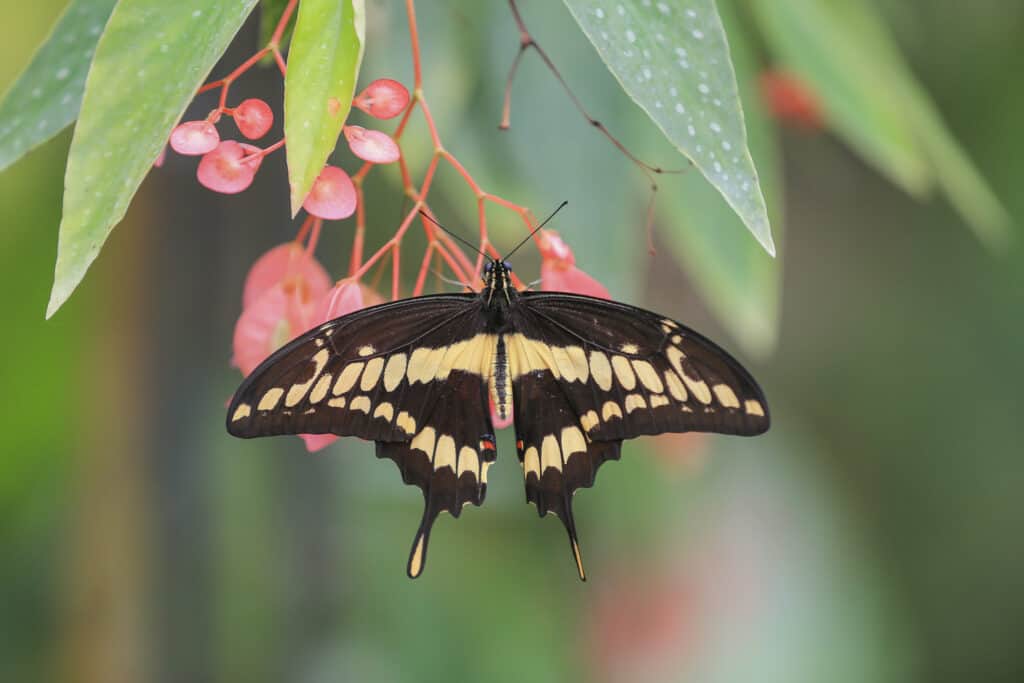
A Giant swallowtail
butterfly
(Papilio cresphontes) feeding on white wildflowers.
©iStock.com/rybalov77
Here’s a great big insect that won’t send shivers down your spine. The largest insect in New Hampshire is the biggest butterfly in North America.
Giant swallowtail butterflies are common east of the Mississippi River in the United States. Their distinctive color and wing shape make them easily identifiable.
These giant insects have bright yellow stripes on black wings with a swallowtail shape (hence the name). The giant swallowtail butterfly’s six-inch wingspan makes it New Hampshire’s largest insect.
7. New Hampshire’s Largest Amphibian: Common Mudpuppy (Necturus maculosus)
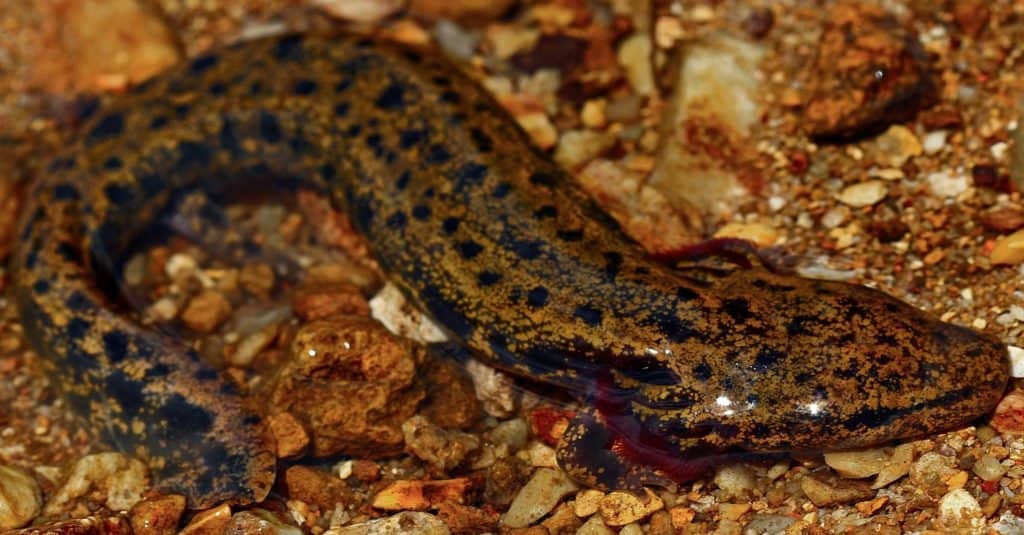
Red River
Mudpuppy
(Necturus maculosus) in a rocky stream.
©Peter Paplanus from St. Louis, Missouri / CC BY 2.0, via Wikimedia Commons – License
While it’s no hellbender, the common mudpuppy is a big salamander. It’s common around the Great Lakes, New York, and Vermont and inhabits parts of the Connecticut River. Scientists believe it’s a non-native species and it doesn’t appear invasive.
Mudpuppies are brown to gray, fully aquatic salamanders. They have a dark line that goes through the eye to the gills and often has a whitish-to-gray belly which may be spotted. These salamanders keep their red, bushy gills throughout their lives, and because of this, scientists consider them permanent larvae.
Although they’re common in their range, mudpuppies aren’t seen often because they’re nocturnal. Most of the day, they hide under rocks and logs, only coming out to feed. The common mudpuppy grows up to 13 inches long and is New Hampshire’s largest amphibian.
8. Largest Animals in New Hampshire: The Common Snapping Turtle (Chelydra serpentina)
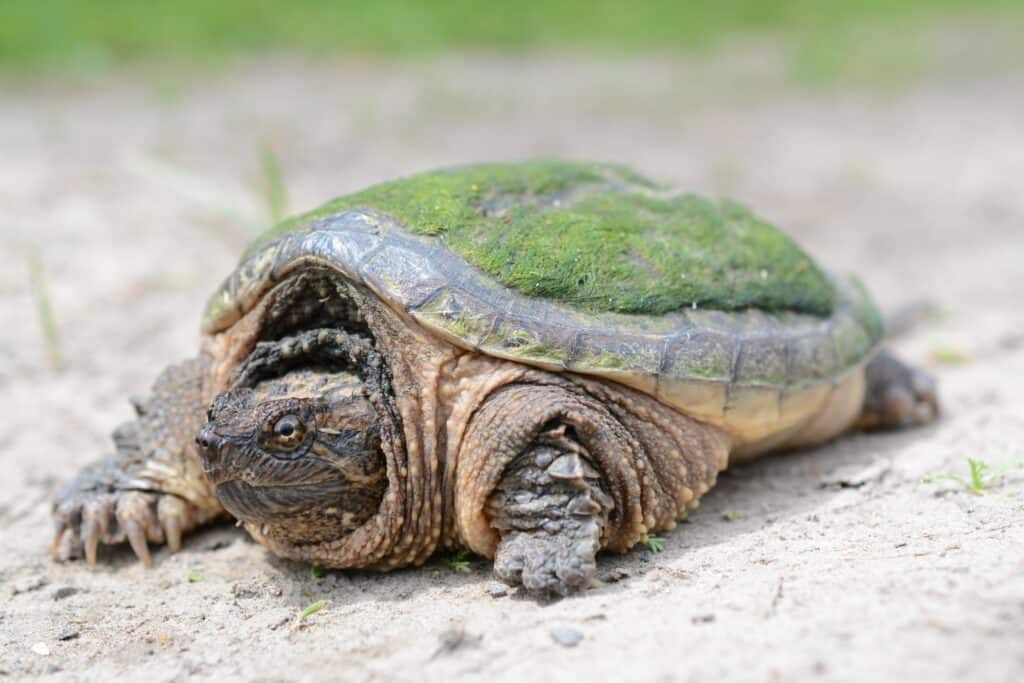
The common snapping turtle is New Hampshire’s largest turtle and can grow its shell up to 19 inches long.
©Trevor Meunier/Shutterstock.com
This chunky turtle with a big head and long tail occurs throughout New Hampshire but is less common further north. Common snapping turtles are opportunistic omnivores that feed on anything they can grab and swallow.
These reptiles can brumate under submerged logs or by burying themselves in mud. Sometimes, snapping turtles brumate in communities, but they’re just as likely to be alone. This species is highly cold-tolerant and are sometimes spotted moving around under a frozen water body.
The common snapping turtle is New Hampshire’s largest turtle and can grow its shell up to 19 inches long. Its head and tail add length that isn’t included in that measurement, making this turtle very impressive indeed!
Summary of the 8 Largest Animals in New Hampshire
| # | Animal | Species |
|---|---|---|
| 1 | Moose | Mammal |
| 2 | Bison | Mammal |
| 3 | American Eel | Fish |
| 4 | Bald Eagle | Bird |
| 5 | Timber Rattlesnake | Reptile |
| 6 | Giant Swallowtail Butterfly | Insect |
| 7 | Common Mudpuppy | Amphibian |
| 8 | Common Snapping Turtle | Reptile |
The photo featured at the top of this post is © iStock.com/Peter Loring
Sources
- Moose | New Hampshire Fish and Game, Available here: https://www.wildlife.state.nh.us/wildlife/moose/index.html
- Bald Eagle | New Hampshire Fish & Game, Available here: https://www.wildlife.state.nh.us/wildlife/profiles/bald-eagle.html
- Giant Swallowtail | Butterfly Identification, Available here: https://www.butterflyidentification.com/giant-swallowtail.htm
Thank you for reading! Have some feedback for us? Contact the AZ Animals editorial team.






